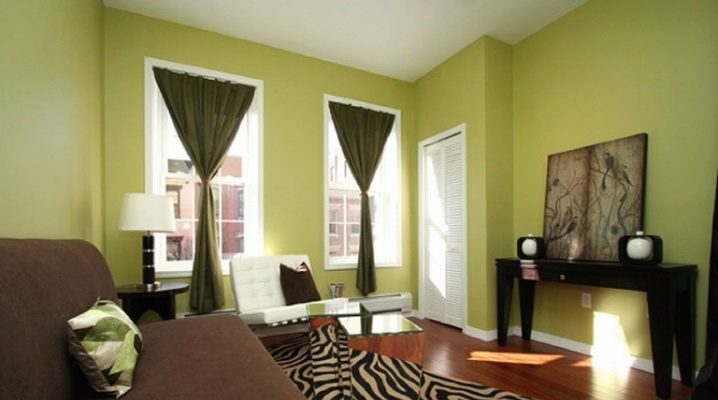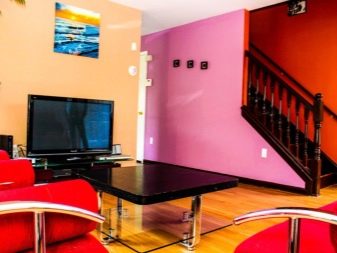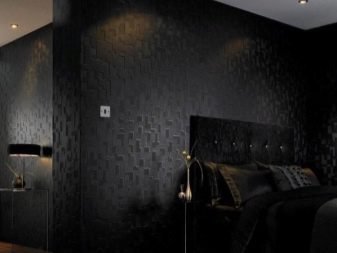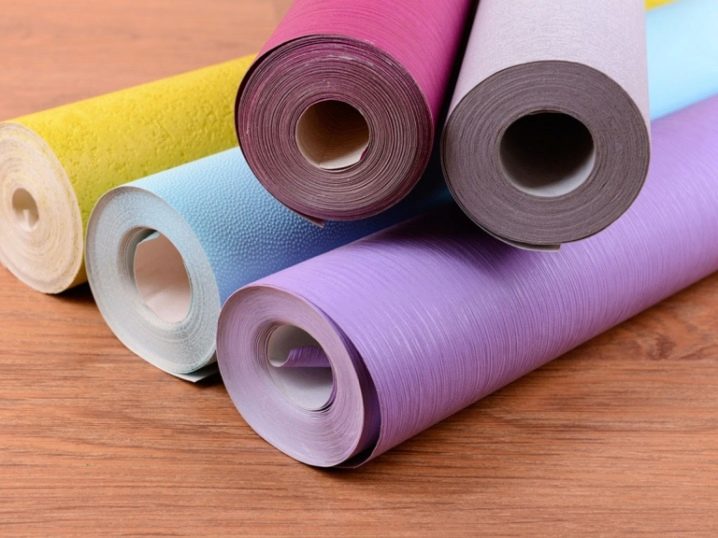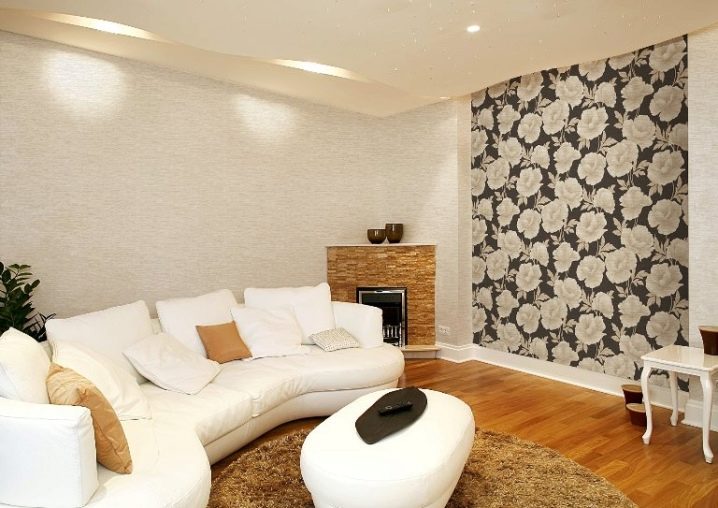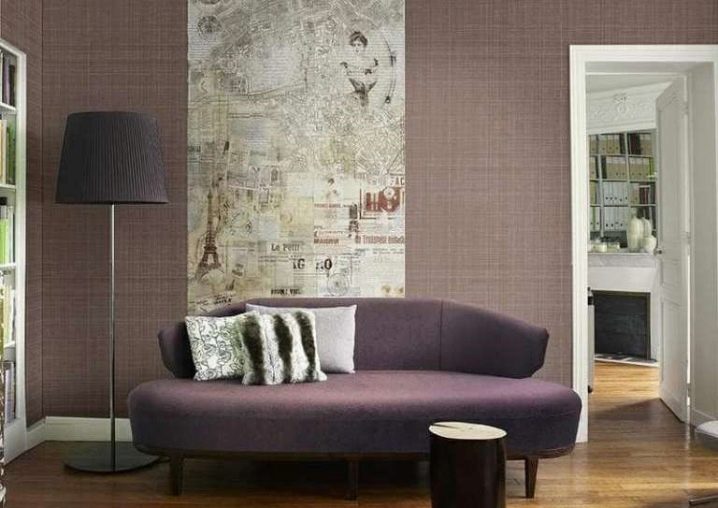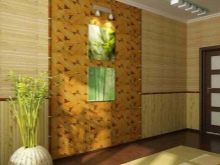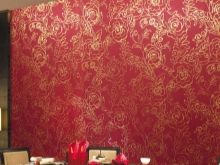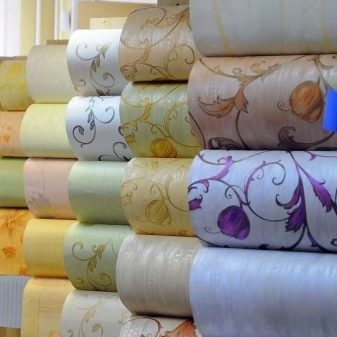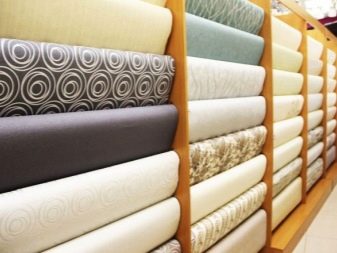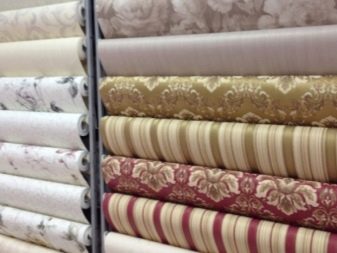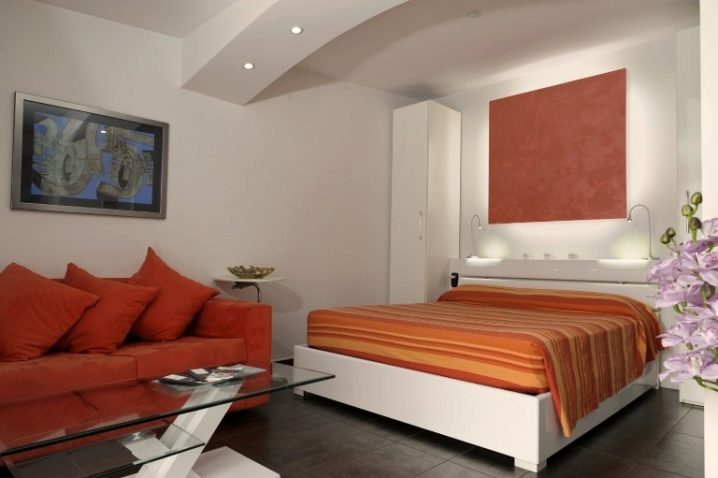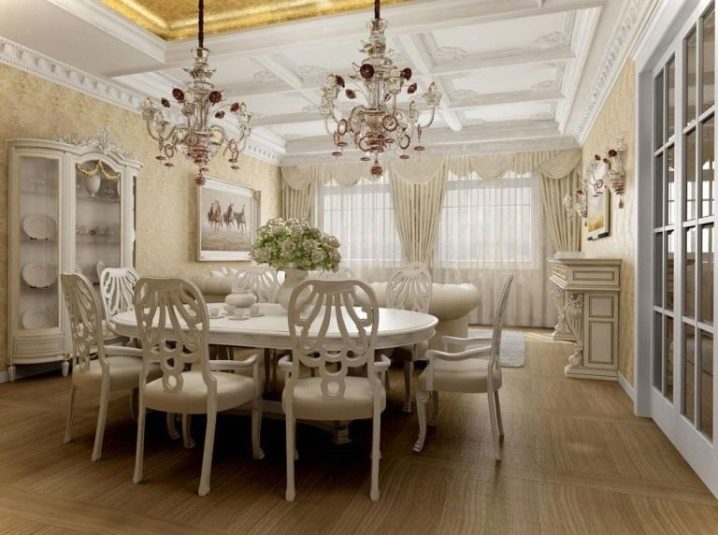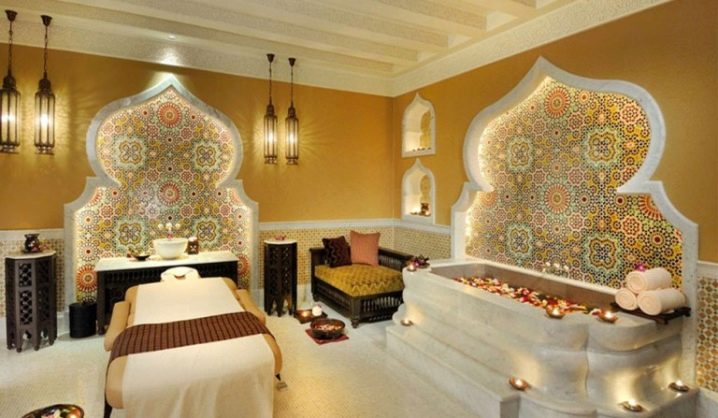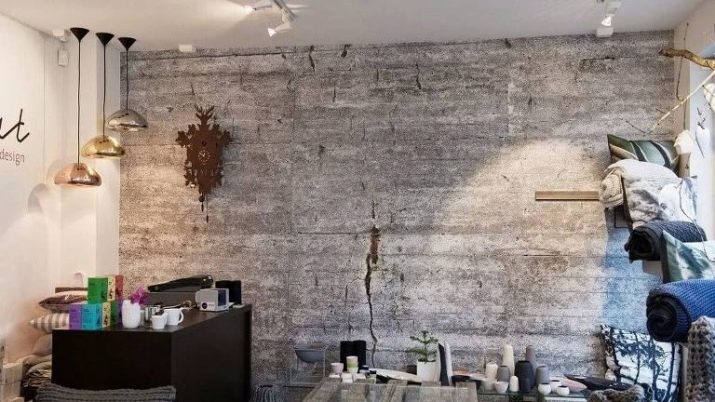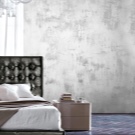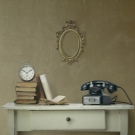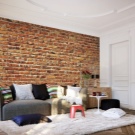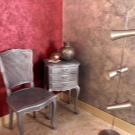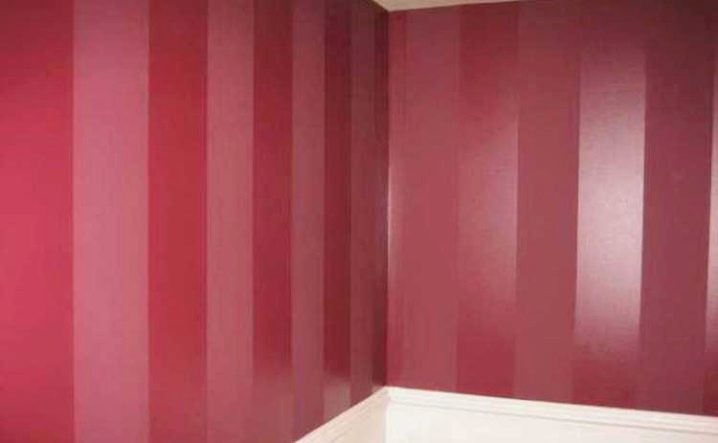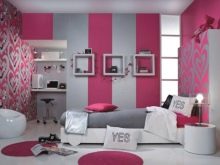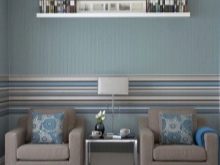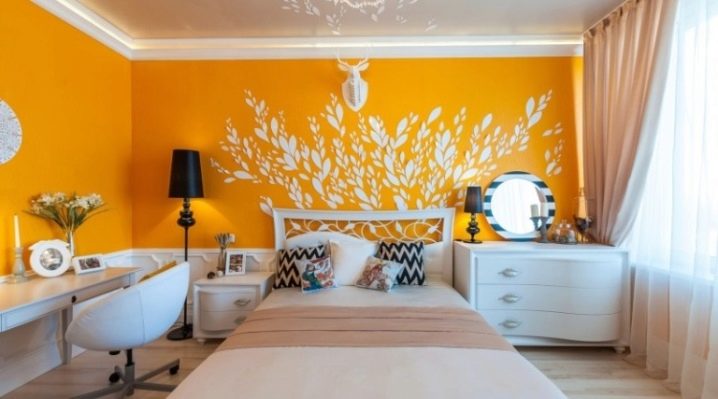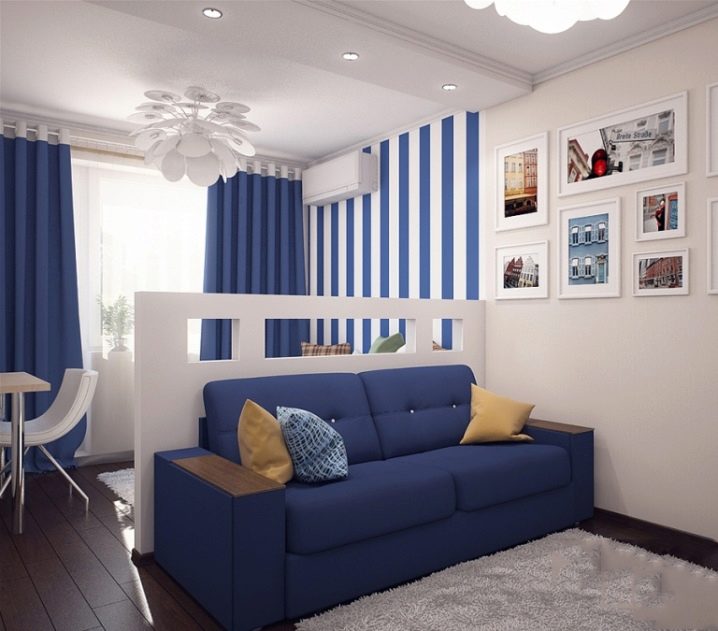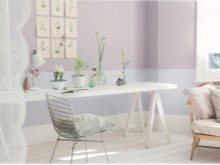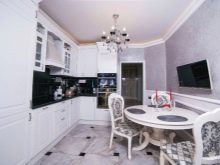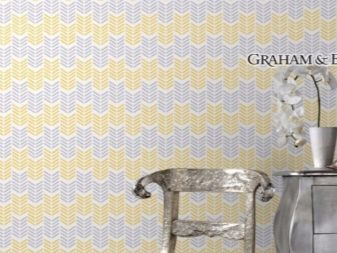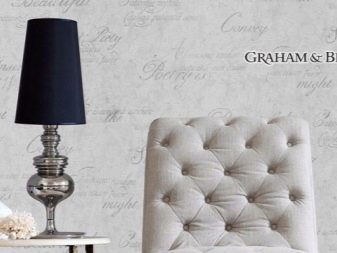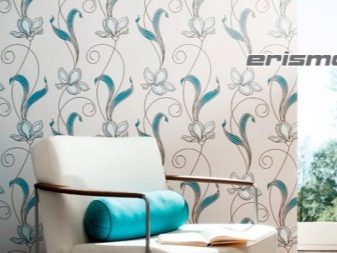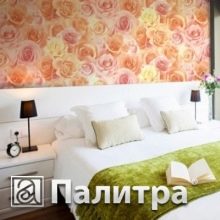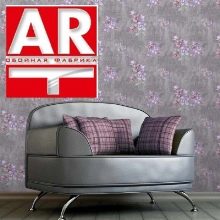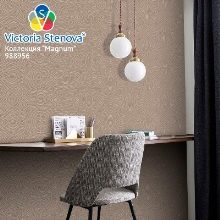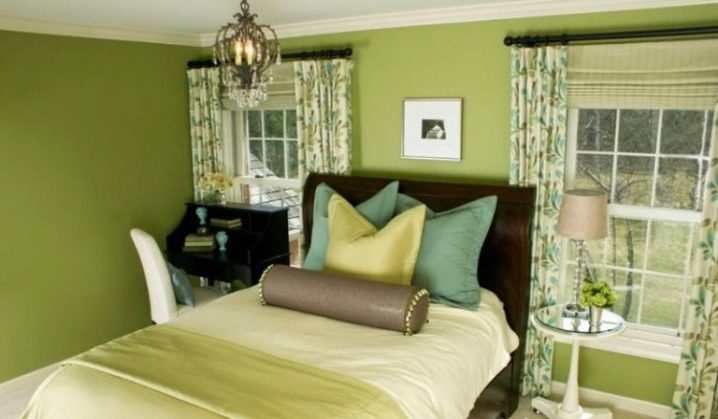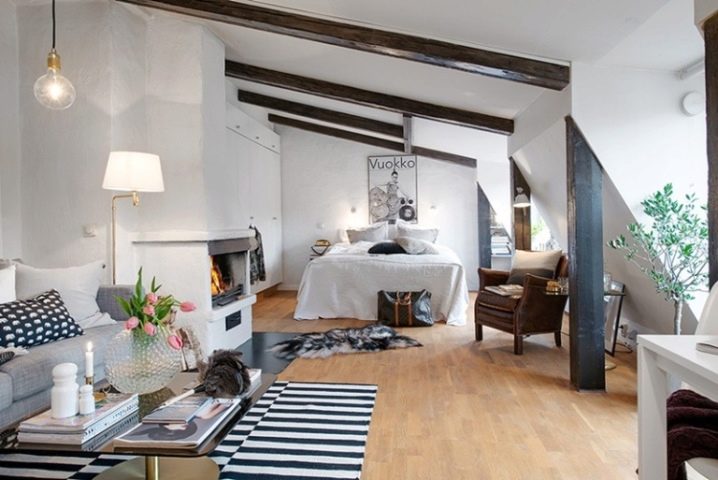Rules for the selection of plain wallpaper
You purchased a house or decided to repair it, and for wall decoration the choice fell on the traditional option for our country - wallpapering. Monophonic wallpaper with all its diversity will help to embody the most daring ideas. It is only necessary to figure out how to choose the most worthy option.
Kinds
If you want to buy not just beautiful wallpaper for the walls, but also a high-quality, durable product, then you should understand the classification of the wallpaper:
- By the form of the surface they can be divided into two groups: smooth and textured (with embossed, finely molded pattern, glued on the picture or any other relief).
- By the number of layers - single-layer and multilayer.
- According to the degree of gloss - matte and glossy. Gloss may be slight or strongly reflect light.
- According to the density of cloths: light with a density of less than 110 g / m2 (most often single-layer), medium (110-140 g / m2) and heavy with a weight of more than 140 g per 1 m2 (thick multi-layer).
- By moisture resistance wallpaper is divided into:
- ordinary, not tolerating contact with moisture;
- moisture resistant with a special moisture barrier. They can be wiped with a damp cloth;
- Washable, cleaned with various cleaning solutions. There are also super washable wallpapers that can be affected even with powders with abrasive particles and brushes.
Material
It depends on the material how the wallpaper will stick, stick, look over time:
- Paper wallpaper are the most budget of the presented in stores. At the same time, they have a huge selection of colors and shades, they are even found with a relief surface. There are two types: simplex (single layer) and duplex (double layer)
- Non-woven wallpaper. Made on the basis of non-woven material with natural or synthetic fibers - non-woven fabric. The smaller the density of such wallpaper, the more they stretch. This is an important aspect when performing repairs.
- Vinyl wallpapers made by applying foamed vinyl on paper or non-woven base. There are products and smooth, and with large stamping. Decorating with a large ornament will look good in the hall of a country house with a high ceiling.
- Fabric wallpaper are obtained by applying a layer of fabric on a layer of paper or non-woven fabric. Due to the use of different types of fabrics, such as silk, viscose, flax, cotton and others, they can have a smooth, relief, and silky structure.
- Technique to create acrylic wallpaper similar to vinyl. Acrylic is applied only on the paper or non-woven layer. But he can not cover the entire surface of the base, so the texture of the wallpaper is only embossed.
- Popular in the world of liquid wallpaper just starting out on the market of our country. This is a mixture of glue and various fibers with additives that must be applied to the walls with a spatula.
- Glass fiber created by interlacing fiberglass in the form of different ornaments. They are very durable, so they are advantageous to use in new homes: during shrinkage, you can not be afraid of cracks and tears on such material. To obtain different shades they are covered with paint.
- Wall-paper from natural materials. In their manufacture using cork veneer, bamboo or metal foil with various patterns.
Dimensions
In the Russian stores are wallpapers with a width of two sizes:
- half meter (mostly cheaper wallpapers are presented in this category). Their width is 53 cm with small deviations;
- meter (they are faster to glue on the wall).
The length of the wallpaper in the roll is familiar to the Russian buyer - 10 meters.
Sizes vary depending on the material. Paper wallpaper is standard half meter and meter, in a roll of ten meters. In non-woven there are lengths of rolls up to 25 meters. Acrylic and vinyl wallpaper make the width and 70 cm with a standard ten-meter length.
Fabric begins with a width of 70 cm due to the characteristics of manufacture.
And when you buy an expensive fabric wallpaper, you will find not rolls, but running meters.
Colors
Light shades are considered optimal: white, beige, gray. It is easier for them to work with a novice amateur designer, and with a professional interior designer the fantasy is limitless in this case. But do not be afraid to use colored wallpaper. Just worth a little deeper to explore the best combination of shades:
- Yellow gives a feeling of joy, symbolizes energy and mind. Suitable for kitchen design, cabinet for extraordinary personalities.
- Shades of blue will decorate the bedroom. This is the color of peace, it is also ideal for marine subjects. But do not get involved in the dark-blue variations - they can give the darkness.
- Pink, delicate peach, sand wallpaper most versatile and give a sense of space, comfort and warmth.
- Olive, Purple, Red Gold - many are afraid to use such complex shades. But you only need to find a successful combination.
- Olive color gloomy for the nursery, and in the living room or bedroom in combination with green, beige or pale blue can look very fresh and fashionable.
Varieties of red, orange, gold should not be used on all walls, just one accent will give a unique character to your home.
Style
Plain wallpaper is perfect for interior design, designed in different styles:
- Wallpaper in the Scandinavian style, as a rule, light shades, without a pronounced ornament, you can use natural materials.
- In the classics, light shades with gilding, glitter, and overflow are preferable.
- The decor in the style of Eastern countries - brighter and monochromatic walls can be combined with decoration with a floral texture pattern (for example, Turkish cucumbers).
- Baroque and Rococo styles are similar, but Rococo has more subtle shades. In the classics or the palace theme is better to arrange large rooms.
- Modern style suggests monochrome wallpaper of cool colors for bedrooms, and in living rooms and halls warm and rich colors. The texture can be under the skin, suede and even plaster. Eco-style is gaining popularity, where natural materials will be appropriate. In the theme of the loft applicable wallpaper for painting or liquid, imitating metal, concrete, as well as brick and stone.
Decor
Decorating a room with wallpaper carries not only the decoration function, but also can help to hide flaws. If the walls have irregularities and cracks, you can hide it by highlighting a flat wall with a bright contrasting color or combining matte textures with glossy ones.
Vertical monophonic stripes of contrasting colors, for example, gray and pink, will look very impressive in the living room, creating dynamics and mood.You can also vertically combine wallpaper monochromatic and patterned, working in a classic style or imitating a palace interior.
Horizontal combination also implies the decoration of plain wallpaper borders. A darker finish with a bright pattern on the bottom can be separated from a monochromatic light shade of the same gamut from above. The room will not seem squat. Or, on the contrary: a dark monophonic bottom and a small vegetable ornament from above pleasant to the eye.
The decor under the plaster well emphasize the bright wallpaper. And the texture with embossed rich color will decorate a niche in a room with light uniform walls.
Design
Designers have their own tricks for each room. The bedroom should be comfortable, relaxing and calm. Pastel shades without a pattern prevail here. If you still decide to select one of the walls with a color or texture, then the whole interior should be expressed in soothing colors.
In the living room a lot of movement, talk, practice. Therefore, you can add brightness to the interior or zone the room with the help of calm and saturated colors in combination.
The texture here also plays an important role. Small kitchen requires pastel shades.Corridors are usually decorated in bright colors. For children ideal calm green shades and unobtrusive textures.
How to choose?
We formulate the rules for choosing wallpaper:
- Decide on the purpose of the purchased goods. For rooms with low ceilings suitable light colors, embossed with vertical lines and medium-sized ornament. In the living room fit non-woven covering, in the corridor and the kitchen is vinyl, and in the nursery mainly from paper or natural materials.
- If there is a relief pattern, then an adjustment is required. And the amount of wallpaper should be increased.
- Pay attention to the size of the rolls.
- For different materials there are specialized adhesives. Incorrectly selected composition can spoil the entire repair. Also methods of applying glue are different. For paper, glue is applied to the wallpaper, and for non-woven fabric - on the wall.
- The density of the wallpaper should be at least 110 g / m2. Otherwise, they are very easy to break.
- At the time of purchase, check all rolls by color. It must be identical. Because in different batches the manufacturer can deliver slightly different shades.
- For rooms located on the sunny side, it is better to choose a little fading wallpaper.
On some of the subtleties of the choice of plain wallpaper, see the following video.
Advantages and disadvantages
Paper wallpaper budget, environmentally friendly (well suited in the nursery), easily glued, but do not wash and burn out much. Waterproof wallpapers are easy to clean, but do not let the air through (it is better not to use them in bedrooms). Fabric wallpaper is expensive and complex in everyday life, although very spectacular in the interior.
Flizelin is not cheap, but it keeps its shape, breathes and serves for many years. Vinyl wallpapers are easy to clean, but hard to glue. Liquid coating is environmentally friendly and easy to apply, although the choice of colors is small. Wall-paper from natural materials are sensitive to moisture and difficult in leaving.
Famous manufacturers and reviews
- Well buyers are talking about wallpaper Grandeco from Belgium, painted using a unique technology. The Belgians embody modern designer trends in the Khroma and Arte brands.
- Quality paper products are produced in the USA, Italy and Germany. The wallpaper of the English company Graham & Brown (Graham & Brown) proved to be a budget and practical product.
- The Swedish concern Wellton and the German factory Vitrulan are widely known among the producers of glass gutters.The creators guarantee the environmental friendliness and durability of their products.
- Wallpaper company Erismann from Germany is widely represented in stores in Russia. Buyers give positive comments on affordable wallpaper.
- Italian companies can offer high-quality products for every taste. Vinyl wallpapers from Limonta won the love of consumers for durability. The company Decori & Decori replenishes its range every year and can offer a truly chic wallpaper. One of the oldest wallpaper factories Sirpi produces high-quality paper and vinyl product in not the cheapest price categories.
- In Russia, buyers note such firms as “Art”, “Palette”, Viktoria Stenova.
Modern options in the interior
Fashionable now loft style in the apartment especially complement the liquid wallpaper, decorated with concrete.
Trendy eco-design can be applied in the bedroom using bamboo wall decorations.
Complex olive color is very harmonious.
The current Scandinavian interior with light walls, decorated with plaster.
